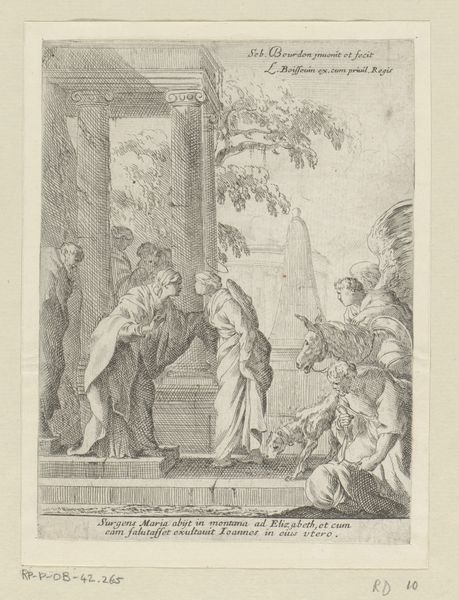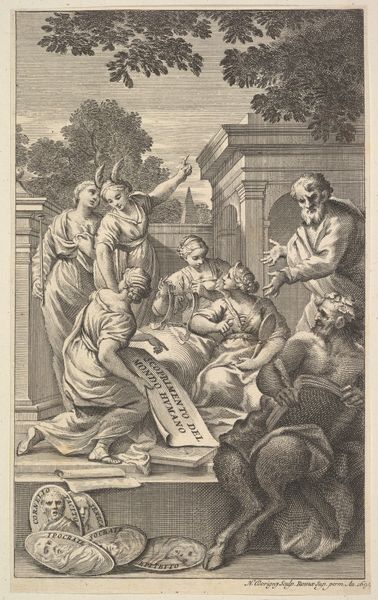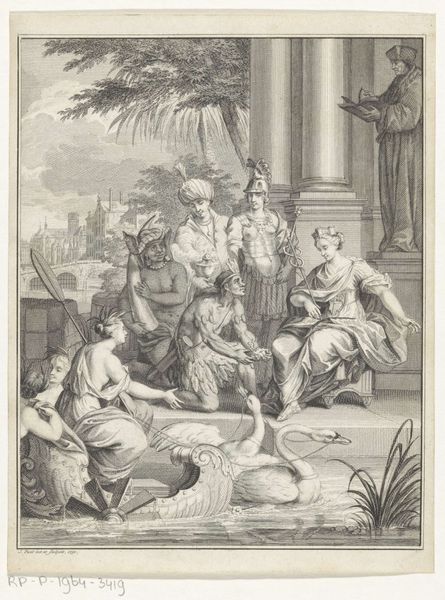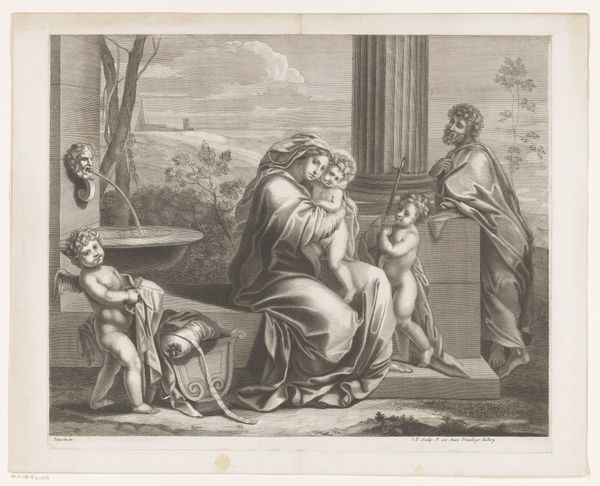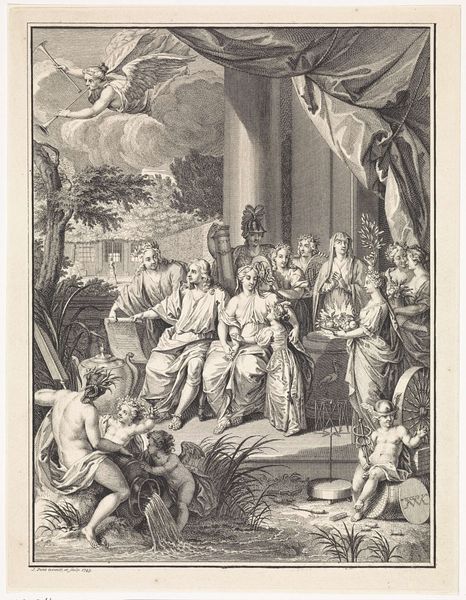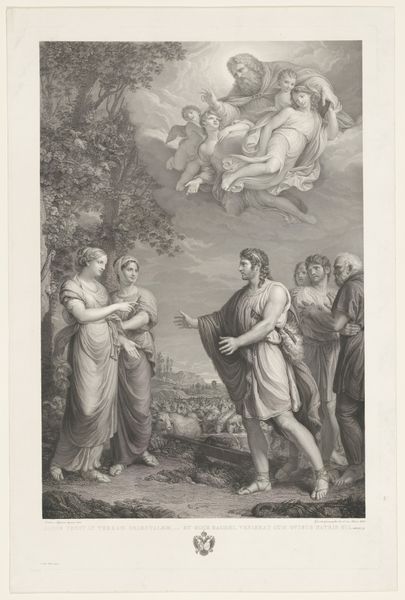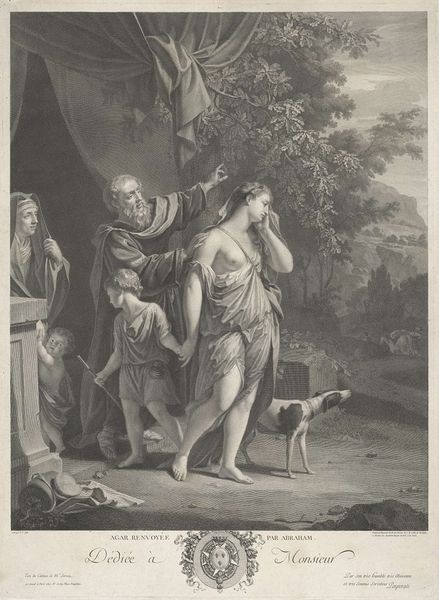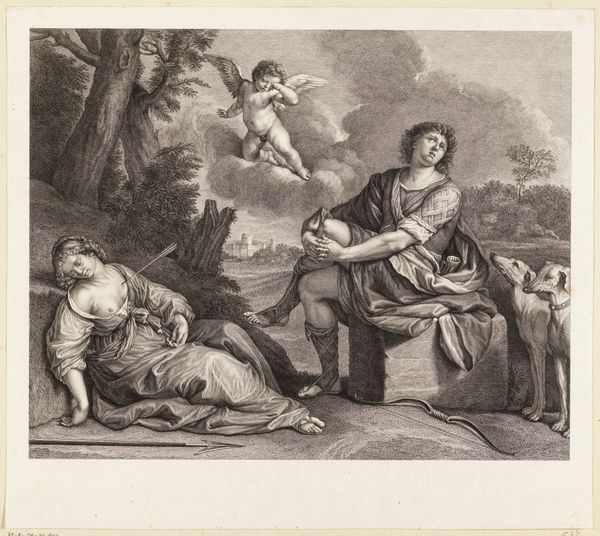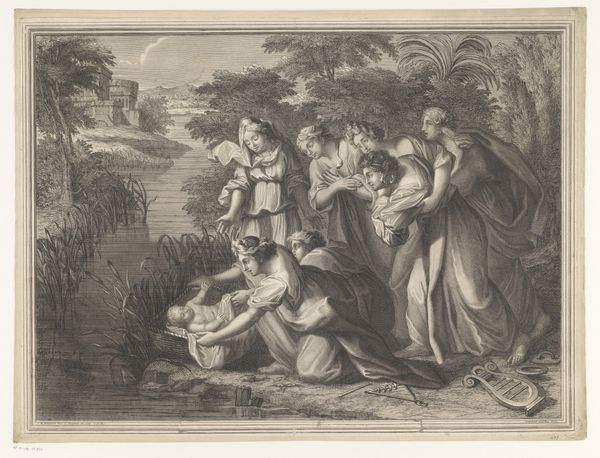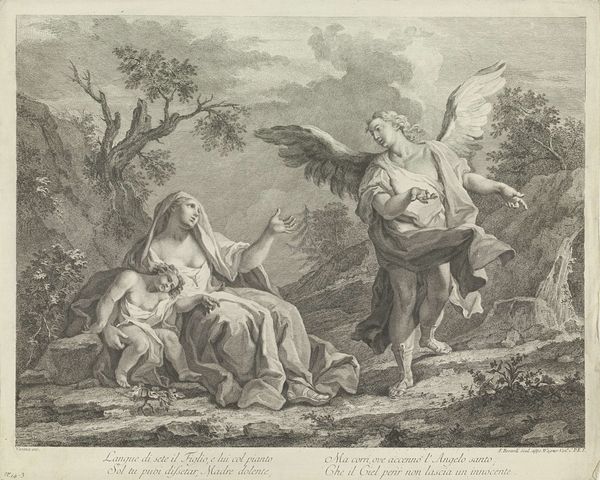
drawing, print, engraving
#
drawing
#
neoclacissism
#
allegory
# print
#
landscape
#
classical-realism
#
figuration
#
line
#
history-painting
#
engraving
Dimensions: Sheet: 19 15/16 x 15 11/16 in. (50.7 x 39.8 cm)
Copyright: Public Domain
Editor: This print, "Mercury and Herse" by François Jourd'heuil, created sometime between 1620 and 1953, has such a classical feel. I'm curious about the relationship between the figures and the landscape. What can you tell me about its context? Curator: Well, prints like this circulated widely, effectively democratizing access to art, particularly history paintings which, back then, often reinforced social hierarchies. Here, the scene presents a narrative, but its political role relies less on overt messaging and more on presenting idealized forms derived from classical antiquity. Do you notice anything about the setting or the figures that evokes this? Editor: Definitely the classical architecture and the flowing garments. And Mercury's pose...almost like a sculpture come to life. It feels very staged, very deliberate in its aesthetic choices. Curator: Exactly. These elements weren't just about beauty; they aimed to legitimize power through association with a glorified past. Think about the French Revolution that occurred a few decades later. Neoclassical imagery was rife, associating new regimes with the perceived virtues of Roman Republicanism. Is it perhaps an aspirational form of political branding through art? Editor: That makes a lot of sense. It's like they're borrowing prestige from the classical era to lend legitimacy to their own time. So, this print isn't just art; it's part of a bigger conversation about power and cultural values. Curator: Precisely. It reveals the social function of art and the constant negotiation of historical narratives within political contexts. Even seemingly simple engravings served as ideological instruments within a complex societal ecosystem. Editor: I hadn't considered that so explicitly. It’s interesting to think of this not just as a depiction of a mythological scene, but as an active player in its contemporary society. Curator: Indeed! It shifts the perception of what art is 'for' and what messages can be conveyed through both explicit and implicit social and historical elements.
Comments
No comments
Be the first to comment and join the conversation on the ultimate creative platform.

